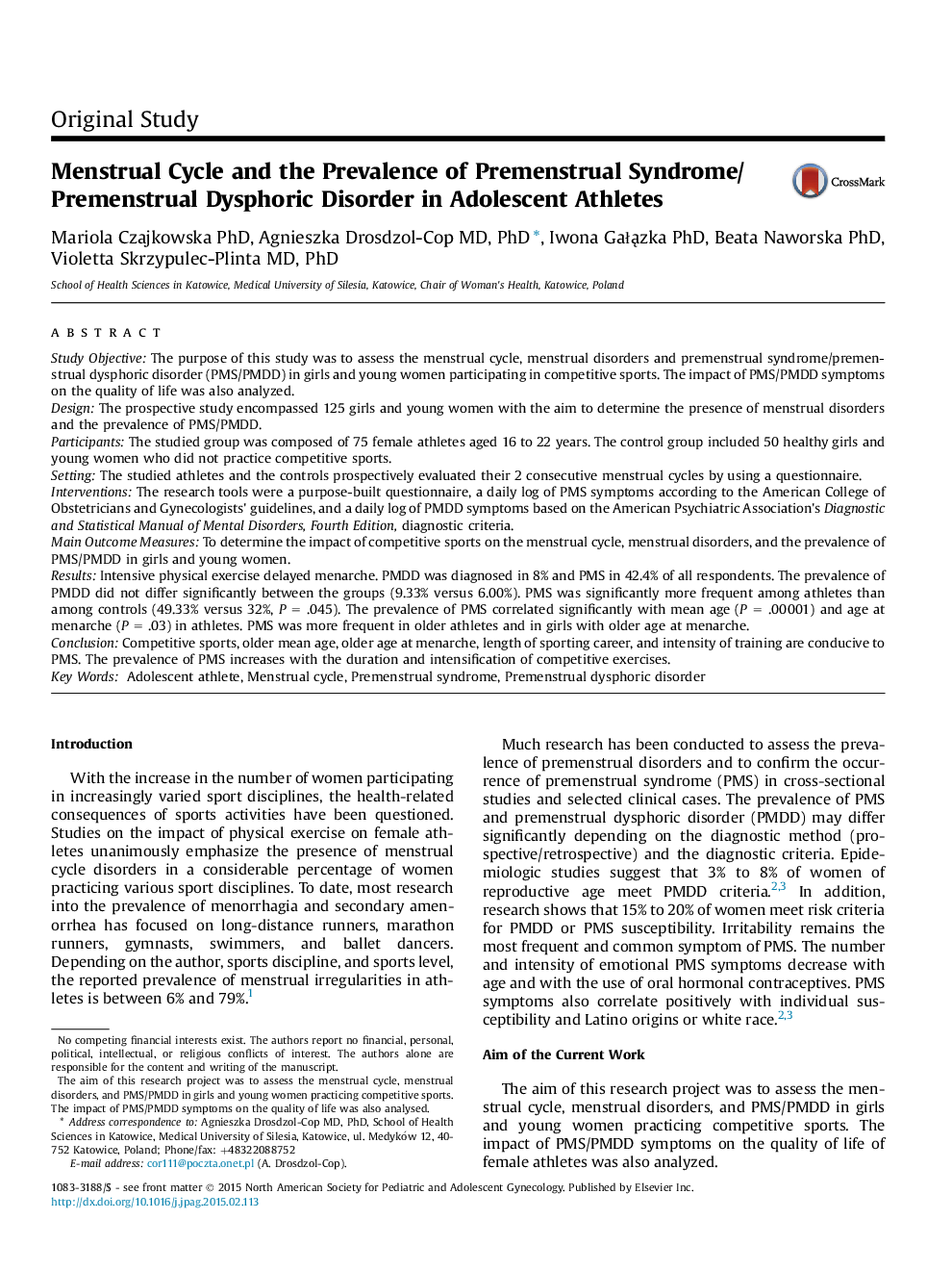| کد مقاله | کد نشریه | سال انتشار | مقاله انگلیسی | نسخه تمام متن |
|---|---|---|---|---|
| 3962733 | 1255669 | 2015 | 7 صفحه PDF | دانلود رایگان |
Study ObjectiveThe purpose of this study was to assess the menstrual cycle, menstrual disorders and premenstrual syndrome/premenstrual dysphoric disorder (PMS/PMDD) in girls and young women participating in competitive sports. The impact of PMS/PMDD symptoms on the quality of life was also analyzed.DesignThe prospective study encompassed 125 girls and young women with the aim to determine the presence of menstrual disorders and the prevalence of PMS/PMDD.ParticipantsThe studied group was composed of 75 female athletes aged 16 to 22 years. The control group included 50 healthy girls and young women who did not practice competitive sports.SettingThe studied athletes and the controls prospectively evaluated their 2 consecutive menstrual cycles by using a questionnaire.InterventionsThe research tools were a purpose-built questionnaire, a daily log of PMS symptoms according to the American College of Obstetricians and Gynecologists' guidelines, and a daily log of PMDD symptoms based on the American Psychiatric Association's Diagnostic and Statistical Manual of Mental Disorders, Fourth Edition, diagnostic criteria.Main Outcome MeasuresTo determine the impact of competitive sports on the menstrual cycle, menstrual disorders, and the prevalence of PMS/PMDD in girls and young women.ResultsIntensive physical exercise delayed menarche. PMDD was diagnosed in 8% and PMS in 42.4% of all respondents. The prevalence of PMDD did not differ significantly between the groups (9.33% versus 6.00%). PMS was significantly more frequent among athletes than among controls (49.33% versus 32%, P = .045). The prevalence of PMS correlated significantly with mean age (P = .00001) and age at menarche (P = .03) in athletes. PMS was more frequent in older athletes and in girls with older age at menarche.ConclusionCompetitive sports, older mean age, older age at menarche, length of sporting career, and intensity of training are conducive to PMS. The prevalence of PMS increases with the duration and intensification of competitive exercises.
Journal: Journal of Pediatric and Adolescent Gynecology - Volume 28, Issue 6, December 2015, Pages 492–498
